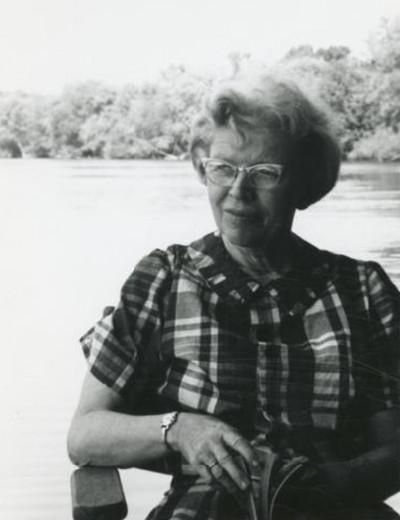How campus became a field site for budding geologists
Geology professor Jay Zambito developed a video-based field experience on campus during Covid to keep students connected to Beloit. Rather than scrap it once students returned, Zambito expanded and refined the lesson to teach local geology and instill an appreciation for campus history.
When Covid first struck and sent students home, geology professor Jay Zambito had to get creative. During classes, he would normally take students to locations within about 45 minutes of campus, such as local quarries, for hands-on experiences identifying different types of rocks and resources. But that would not happen for a while.
As he planned an online version of his course, Evolution of the Earth, his goal was to teach geology while keeping students connected to the college. To that end, he collaborated with the college archives and the history and anthropology departments to develop a special campus-based geology assignment. The lesson focused on such things as building materials that also revealed something about the progression of campus history. He filmed himself touring campus, combining local geology with college history.
He posted the video as an assignment for students to watch while they studied remotely. Once they returned, Zambito expanded and adapted the experience into an in-person assignment.
Called “The Geology of Beloit College,” the exercise features nearly 40 numbered stops for students to observe and answer questions about building foundation walls, steps, and facades as well as other features on or close to campus, such as retaining walls.
Beyond geology, Zambito says, “Students are gaining an appreciation for the history of the campus.”

Credit: Ray Broad’26One vivid example can be found at stop number seven: the historic stone water tower north of campus, which was built in 1885 to provide pressurized water to the city. Built from dolostone bedrock that was locally quarried in the city of Beloit’s early years, the structure was constructed before it was possible to transport far-flung building materials to campus. Students are instructed to look at the stone’s “abundant marine invertebrate fossils.” After they examine the water tower, they can also connect a visual timeline to some of the college’s oldest historic buildings. The same locally quarried stone can be found in the foundations of the college’s mid-19th century structures, such as Middle College.
Ella Aizeki’25 and Brigid Parker’25 took the course in fall 2022. Neither is majoring in geology, but they both found the course worthwhile.
“I really ended up enjoying the class,” Aizeki says, “because it gives you an interesting context for the world that we live in.”
For Parker, the Geology of Beloit College assignment was a great opportunity to get outside the classroom environment and do some independent work on her own time. The bulk of the assignment took place over two class periods during which students would follow the itinerary mapped out in an assignment packet and answer prompts, such as “What are some invertebrate fossils found in the rocks at this stop?” and “Does this look like the local dolostone that was used to build the water tower?”
Parker found that the lesson paid off, making her think more deeply not only about the material composition of the campus, but also about how using and transporting materials have changed over time. “I think geology is a good class for anybody to take because it puts things into perspective,” she says.
The assignment also covers the history and significance of the Native American burial mounds on campus. Since Beloit is situated on land once belonging to Indigenous peoples, Zambito believes campus residents are responsible for contributing to the mounds’ preservation and understanding their cultural significance.
Because of its focus on grounding students more in the history of their campus environment, Zambito plans to retain the Geology of Beloit College assignment as a permanent part of his course. Meanwhile, with most travel restrictions lifted, the geology department is back to leading its popular field experiences beyond campus, too.

Credit: Ray Broad’26
In July and August 2023, students enrolled in a Luce Foundation-funded Landscapes in Transition course will travel to Oga, Japan, to study the impact of geoparks (conserved geologically significant sites) on rural sustainability. After classes end in May 2024, students will be able to join the first geology Field Excursion course held since Covid, when Zambito leads a two-week trip to upstate New York to collect world-famous fossils and learn about the geologic history of the Finger Lakes and Catskill Mountains.
The off-site field trips are a welcome return to normalcy that complements the study of campus geology.
“We might be hiking up a volcano one day and snorkeling the next,” geology professor Jim Rougvie says of the department’s typical forays into the field. “Because we mostly camp on the field excursion, students tend to build a lot of camaraderie that leads to a strong learning community back on campus.”
Grayson Jensen’25 is majoring in creative writing and ancient Mediterranean studies with a minor in medieval studies at Beloit College. They enjoy reading, writing, and drawing as well as playing Mario Kart and watching movies with friends.


